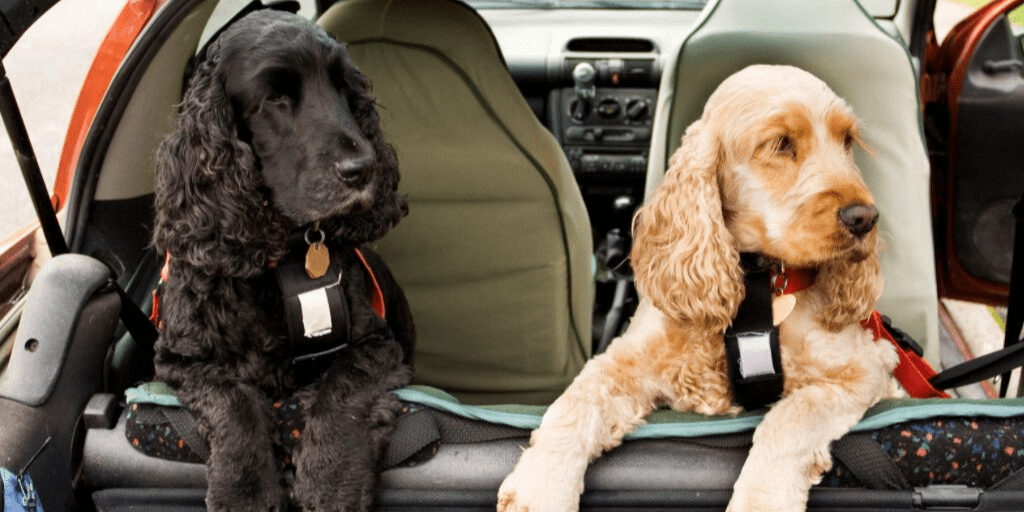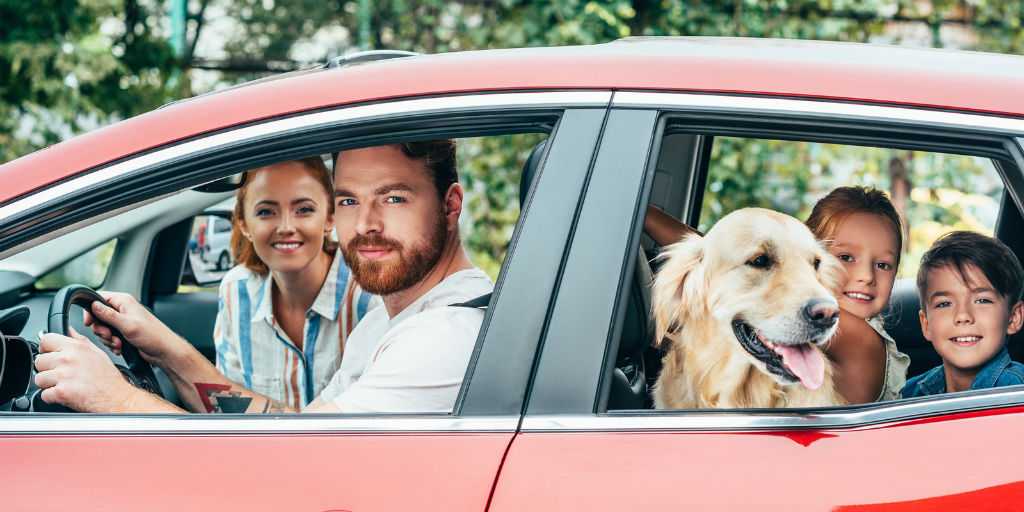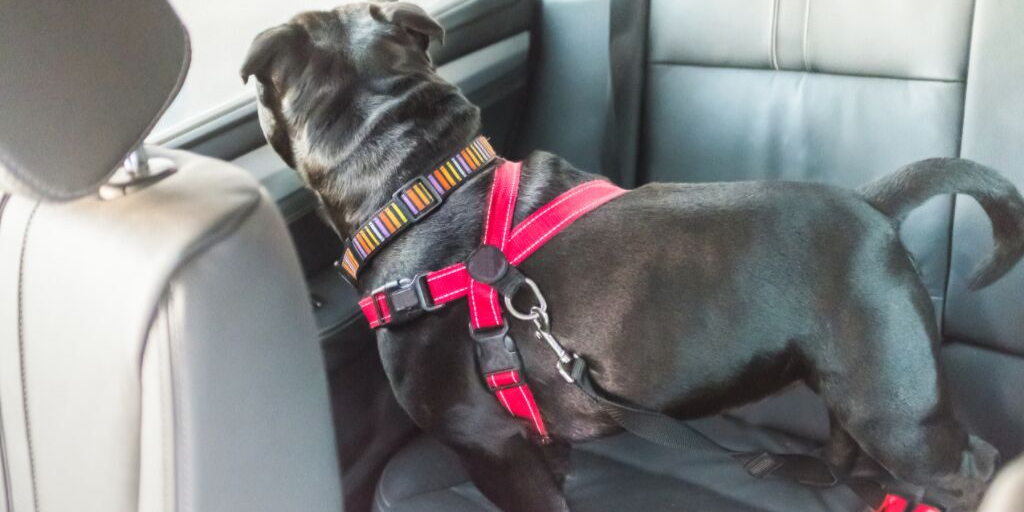What you should know about long car trips with your dog
At some point you will need to take a long car trip with your dog. This may be required to move, go on holidays or visit relatives. Long car rides can be perfectly safe for your dog, and stress free, but there are steps you should take to help your dog in the car.
Reducing stress in the car

How your dog copes with the long car ride depends on personality and previous exposure to cars. Relaxed dogs who frequently ride in cars will probably have little to no difficulty with an extended trip. Anxious dogs and dogs who seldom ride in cars can find long car rides very stressful.
If your dog is unused to the car you should gradually build up to a long car ride before embarking on extended trips. Many dogs fear cars because car rides often lead to a visit to the vet, or to boarding kennels. Take your dog on frequent 5-10 minute rides to exciting places such as the beach and dog park. Maintain a normal conversation in the car and do not appear overly anxious in front of the dog. If your dog does not suffer from motion sickness then treats provided during the journey can help make the trip positive.
If your dog suffers from an extreme fear of car trips reconsider the need for taking your dog on a long car journey. At best an anxious dog in the car is stressful for the driver, at worst it can be dangerous. If a car trip is absolutely necessary for a fearful dog then speak to your veterinarian about the use of sedatives in the car. There are risks associated with the use of these medications, and your veterinarian will likely recommend a trial run with the drug in the house under direct supervision.
Make the car comfortable for your dog

Dogs can suffer from motion sickness in the car, just like people. Make sure your dog has a comfortable spot to lie, on the back seat or in a crate. Some dogs like to be able to see their owners, particularly if they are anxious. Being able to look out the window is also important for dogs that may feel motion sick. Ensure air flow through the car is adequate, crack open the back window so your dog has a constant supply of fresh air.
Remember that your dog needs toilet breaks. An accident in the car will be unpleasant for both you and the dog for the rest of the long car trip. Try to stop at least every 2 hours to give your dog a rest outside and the chance to eat, drink or go to the toilet. Remember to keep your dog leashed when stopping near roads. If you notice your dog suddenly becomes restless, this may be a cue to pull over in a safe spot for a quick poo or wee break.
Your veterinarian may be able to supply you with anti-nausea medication for a long car ride. If you are worried about motion sickness in your dog, chat to your veterinarian.
Car Safety for your dog

There are a few important rules to keep in mind when travelling with your dog in the car:
- It is illegal to travel with an unrestrained dog in the car. Make sure your dog is secured with a safety harness & dog seat belt or in a crate in the back of the car. Unrestrained dogs have been known to fly through windscreens in car accidents. Never ride with your dog on one of the front seats. Front seat airbags can kill a dog if they go off. Car harnesses can be bought in most pet stores and are useful to safely secure a dog in the car. Make sure your dog wears a safety harness and the seatbelt is secured at the top of the harness on your dogs back. Never attach the dog’s seat belt to their collar as it could strangle your pup in an accident!
- Do not allow your dog to stick he/her head out of the window of the car. Do not open windows wide enough to allow your dog to stick their head through, or climb through. Dogs can easily be injured by passing cars or flying gravel if they have their head out of the window.
- Do not leave your dog unattended in a car, even if the windows are down. Temperatures rise quickly in cars even on cold days. A dog left unattended in a car can die in minutes. Sometimes dogs may be forgotten in cars, particularly if owners do not often travel with them in the back seat. To avoid this leave an important item like a phone, wallet or handbag in the back near your dog.
- Always focus on your driving with your dog in the car, and pull over to stop safely if you need to adjust or check anything to do with your dog.
With preparation long car rides do not have to be difficult. If you are at all worried about how your dog will cope in the car you can talk through the issue with your veterinarian.

ABOUT THE AUTHOR
Dr. Bethany Richards. BVSC (Sydney University) from Southern Cross Vet.
Dr Beth enjoys all aspects of veterinary medicine and has a special interest in promoting animal welfare. Dr. Beth is part of the Animal Ethics Committee at the Children’s Medical Research Institute of the Children’s Hospital in Westmead.
Thanks for the guest blog, Dr. Beth!
Find dog parks near you or discover new places to sniff on Pupsy!
Choose from dog friendly accommodation, pubs/bars, beaches & wineries just to name a few…




SIGN YOUR DOG UP TO PUPSY NOW AND CREATE A FREE PROFILE!
Unleash other pawsome (and free!) Pupsy features for your dog:
- Find new mates for your dog & send friend requests | search by council, breed or age
- Check in to places so your dog’s friends know where to find you
- Save your favourite places and write reviews to help the dog community
- …and many more

Pupsy is the furriest community on Earth dedicated to make all our dogs feel special!
